First steps: Clinical staff built comprehensive clinical program
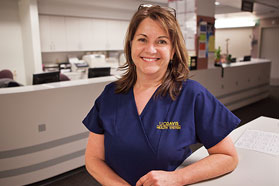 "The doctors trust us and recognize the important role of nursing in cancer care. They give us the autonomy to make decisions in our realm, and that is incredibly rewarding."
"The doctors trust us and recognize the important role of nursing in cancer care. They give us the autonomy to make decisions in our realm, and that is incredibly rewarding."
An exciting ride
Teri Lown likens her 21 years of working as a nurse at the cancer center to flying through the air while clinging to the side of a speeding bus.
"Keeping up with all the changes has been exhilarating!" she says. "It has been a wild ride."
Lown, clinical resource nurse, and Linda Moe, nursing manager, have been with the cancer center since it opened in 1991. They both recall those first days of unpacking boxes of supplies and setting up the clinic from scratch in the sparkling new building.
"We had to figure out how to run a clinic as we went," recalls Moe. "It really was an exciting time."
The cancer center at the time had only three medical and surgical oncologists in addition to director James Goodnight, Jr., and a handful of registered nurses.
"Jim had the vision to bring different specialties together in one place – it was a new concept," Lown remembers.
Many dramatic changes have taken place since, particularly the surge in patient growth as more specialties, such as gynecology and pediatric oncology, became affiliated with the burgeoning center.
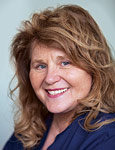
"Achieving comprehensive cancer center status is a real confirmation that we are in the forefront of cancer care."
Moe and Lown recall how registered nurses at first organized everything for patients such as making appointments, ensuring financial coverage, arranging for home support, and of course, providing nursing care.
With increased volume and complexity, staffing changed. Office assistants were hired for clinic administration. Medical assistants were brought in to help with routine nursing tasks, and physician assistants were added to perform initial medical assessments. A whole staff was hired to handle patient insurance. When access to experimental treatments expanded, additional staff dedicated to coordinating clinical trials joined the center.
Moe and Lown say that the most important quality connecting everyone over the years is the sense of mutual respect and teamwork that pervades the cancer center.
"The doctors trust us and recognize the important role of nursing in cancer care," Lown says. "They give us the autonomy to make decisions in our realm, and that is incredibly rewarding."
Along with expansion came increased efficiencies. Getting the radiation oncology department housed in the same building was a tremendous step forward, according to Lown. In the early days, she remembers, it took five days for a patient to get a medical scan whereas now patients just take the elevator downstairs after their medical oncology appointment.
Another change was the health system-wide switch to electronic health records (EHR). "EHR revolutionized patient care," says Lown. "We used to have to run around to find X-rays and other films. Now we have instant access at any computer station."
Telemedicine also expanded the cancer center’s ability to provide care. During regular "tumor boards," in which the health-care team discusses cases, providers in community hospitals outside of Sacramento can now virtually be in the room with a direct, real-time connection, and get important advice from experts on treating their cancer patients.
For Moe, her patients are what inspires her and make her job so rewarding. But working in a cancer clinic can also take its toll on staff, she says. "Our interactions are on such a deep and intimate level – truly life-and-death issues on a daily basis."
Lown and Moe agree that the biggest change they have seen over the years has been the "light-speed" increase in knowledge in the cancer field.
Not only does the cancer center offer patient counseling, but recently brought in a psychiatrist to talk with staff and help them deal with their own grief as they lose patients for whom they have developed close personal bonds.
Lown and Moe agree that the biggest change they have seen over the years has been the "light-speed" increase in knowledge in the cancer field. As cancer care has become more specialized, so too has the amount of information they must track.
"For me, this is what makes working here so exciting," says Lown. "It is a real privilege to work with this caliber of doctors and to be part of a cancer center at the leading edge."
"The whole staff is proud to be associated with the cancer center as part of the team," adds Moe. "Achieving comprehensive cancer center status is a real confirmation that we are in the forefront of cancer care."
Everyone has watched the clinic "outgrow all expectations and become the product of its own success," according to Moe. They are now counting down to the cancer center expansion, opening in September, when they will again unpack boxes in anticipation of new beginnings.
Steering patients to promising new treatment
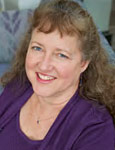
"We want to give our patients the best opportunities for a cure," says Turrell. "Many times access is available only in the context of a clinical trial."
Corinne Turrell has a long history of helping patients gain access to clinical trials
Corinne Turrell may be the only employee at UC Davis outside of the transportation department with "navigator" in her job title. As clinical trials navigator for the UC Davis Comprehensive Cancer Center, she steers patients toward the most promising new treatments available for their cancer.
"We want to give our patients the best opportunities for a cure," says Turrell. "Many times access is available only in the context of a clinical trial."
Turrell started working for UC Davis in 1984 when the clinical trials program was in the Division of Hematology and Oncology. She remembers filling out consent forms on a typewriter and handwriting schedules into a notebook.
"I could do everything to administer the program then – enrollment, budget, patient management, ordering supplies and follow-up," recalls Turrell with a laugh at how times have changed.
As other departments became involved in clinical trials and the cancer center joined many research groups such as the California Cancer Consortium and the Southwest Oncology Group, the program mushroomed.
Not only are there many more trials ongoing at any one time – about 80 to 100 for adults alone – but according to Turrell, they have become exponentially more complex. Scientific protocols are much more elaborate, and obtaining insurance authorization can be labor-intensive. The clinical trials administrative staff now numbers more than 30, with separate departments dedicated to regulatory matters, business and clinical data management.
Turrell now specializes in matching patients for trials. She screens all new cancer center patients for eligibility, and fields patient and referring physician queries. She is always looking for ways to let patients know about clinical trial opportunities, and helped set up a dynamic and highly informative website that allows patients to easily search for an appropriate clinical trial and offers support to those seeking new treatment options.
Turrell reflected on her years with the clinical trials program and watching it grow into an integral part of the center’s new National Cancer Institute designation.
"Getting comprehensive cancer center designation is a culmination of years and years of effort," she says. "A big part of it is the clinical trials program, which gives our patients access to top expertise and cutting-edge treatments close to home."
Refining treatment
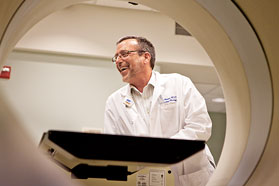 "The UC Davis Medical Center has been extremely supportive in helping us keep up with the newest technology, making us the most advanced resource for radiation therapy in Northern California outside of
"The UC Davis Medical Center has been extremely supportive in helping us keep up with the newest technology, making us the most advanced resource for radiation therapy in Northern California outside of
San Francisco."
Rick Harse reflects on changes in radiation oncology
Perhaps in no area of cancer care are the changes over the last decades as striking as in radiation oncology. Rick Harse, chief radiation therapist at UC Davis Comprehensive Cancer Center, has had a career spanning more than 30 years and remembers treating patients without the help of computers.
"Now we are completely dependent on computers and couldn’t work without them," says Harse, as he walks around the ground floor of the UC Davis Comprehensive Cancer Center, which looks a bit like a science-fiction movie set with its giant doughnut-shaped machines used for delivering therapeutic radiation.
Harse gives a nod to a room full of dosimetrists as they calculate the radiation dosages for patient treatments. In another room, a team of doctors and therapists confer at a computer tomography (CT) simulator, which allows planning for precise 3-D tumor targeting for each patient.
Harse and senior radiation therapists Marie Bowers and Jesse Hahn started at the cancer center when the building opened in 1991 and the radiation oncology department was under the auspices of UCSF. Four years later, the UC Davis Department of Radiation Oncology took over, and less than a decade after that, the facility had outgrown itself, and a 7,000-square-foot expansion began to make room for its third linear accelerator. Harse, involved in planning the expansion, shakes his head and chuckles in disbelief as he remembers how construction came to a screeching halt when human bones were discovered at the site. The workers had found a long-lost indigent cemetery used by the old Sacramento County Hospital around the mid-1800s. The 28 gravesites were carefully documented, exhumed and turned over to St. Mary’s Cemetery for reinterment, and construction resumed.
Over the years, Harse has seen patient volume increase by two-thirds, and an increasingly sophisticated armamentarium of cancer-fighting technologies, including an Elektra Leksell PERFEXION Gamma Knife System, which allows doctors to focus beams of radiation at a specific site in the brain to stop tumor growth. The noninvasive, extremely precise "bloodless knife" is used on an outpatient basis and is the first in the Sacramento area.
According to Harse, all the tools – from the 22-ton gamma knife to tiny brachytherapy seeds placed inside the body to deliver treatment to a highly localized area – are designed to maximize damage to a tumor while minimizing harm to surrounding organs and tissues.
"We have gotten better and better over the decades at specifically targeting cancer cells," says Harse. "The UC Davis Medical Center has been extremely supportive in helping us keep up with the newest technology, making us the most advanced resource for radiation therapy in Northern California outside of San Francisco."
Caring for a network of patients
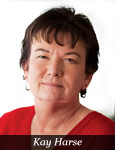
As manager of the UC Davis Cancer Care Network, her mission is to ensure that, as much as possible, patients receive care from their own doctors and hospitals close to home.
Kay Harse promotes access to UC Davis Comprehensive Cancer Center expertise
While most nurses at the UC Davis Comprehensive Cancer Center care for the patients they see every day in Sacramento, Kay Harse worries about patients she doesn’t know and who live far away. And she would rather not see them in Sacramento.
As manager of the UC Davis Cancer Care Network, her mission is to ensure that, as much as possible, patients receive care from their own doctors and hospitals close to home.
"The Cancer Care Network provides support to hospital-based community cancer centers so that patients can stay with their families and support system," says Harse, who serves as the network’s chief administrative officer. "Our goal is to help patients have everything they need for excellent cancer care in their own communities."
The UC Davis Cancer Care Network is a unique partnership between the UC Davis Comprehensive Cancer Center and community cancer centers in Marysville, Merced, Rocklin, Pleasanton and Truckee. Introduced in 2000, it is the first specialty-care network for UC Davis and is believed to be one of the first devoted to cancer care for a public institution.
The UC Davis program emphasizes collaboration, and member centers offer teams of medical and radiation oncologists, nutritionists, counselors and other support staff who work together to address as many of their patients’ needs as possible.
According to Harse, collaboration is enhanced by telemedicine capabilities. Using state-of-the-art broadband technology, specialists from member cancer centers meet with UC Davis specialists in videoconferences called "virtual tumor boards" to develop patient treatment plans. The tumor boards also provide opportunities for physicians to assess the needs and opportunities for additional resources, such as novel therapies available through clinical trials, or referrals to UC Davis for specialty care.
"The network provides physicians in areas remote from large urban centers access to specialists and researchers who are on the frontlines of developing new diagnostic techniques and novel treatments," says Harse. "The Cancer Care Network and expanding our hospital partnerships support our role as the leading tertiary care provider in the region."
Harse started her career with UC Davis Health System in 1989 as an administrative nurse at the infusion center, when there were only seven beds available for adult and pediatric patients. When the cancer center opened she managed the clinic, watching infusion visits grow from 5,000 to 23,000 annually.
"I’ve watched the cancer center grow from the start, with the excellent leadership of Dr. Goodnight and Dr. de Vere White," Harse says. "It has been phenomenal – I don’t ever want to work anywhere else."






